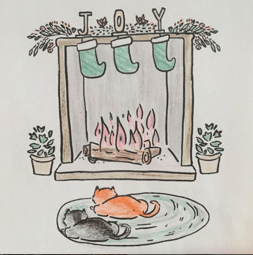Making Website Images More Informative
Internet users are notorious for doing more skimming than reading, so the images on your site may be your only chance to hook readers and make your point. Keep users interested by using website images that are engaging and informative.
Be Prepared
Website images that are chosen after your text has been written may come across to viewers as generic or irrelevant. Avoid this problem by planning the content of your website - text and images - in tandem.
Before beginning your webpage, know how many images you wish to use and what the main point of each image will be. To help you choose the right picture for each available spot, make a short list describing the purpose or message of each intended image. Allow your chosen images to influence the text, and allow the text to influence your choice of images.
Less Is More
Keep your website image simple. Use flat or minimalist backgrounds, in colors related to the image’s central figure. Photographs that place your central figure against a flat wall or a subtly textured background will keep the focus of the image on the subject. Busy backgrounds have a snap-shot like quality that can distract from the image’s main message.
Trick Of The Light
Lighting is equally important. Pictures that feature subjects that are too dark, too light or washed-out may be ignored or misinterpreted. Lighting extremes, with deep shadows and harsh, bright light can create confusion as well. When in doubt, diffuse natural day light is flattering and attractive, and will keep the image clear and informative.
Size Matters
Although a digital image can be shrunk to a size much smaller than the original, a digital photo cannot—should not—be enlarged beyond its actual size, or resized using HTML. Doing so compromises the focus and quality of the image. To avoid issues, use digital images much larger than you need and plan to reduce the size of the image as required.
Captions and Alt Tags
Don’t forget the alt tags. This is an important detail that’s easy to overlook. Text readers rely on alt tags to convey information from your image to the visually impaired. Alt tags are also recognized by search engines and can lead traffic directly to your site.
Captions can be helpful when used properly. Think of a caption as a chance to support the information in the corresponding image and offer extra, related information. Avoid captions that restate the obvious information provided by the picture.
Stock Photography
Avoid stock photographs that appear on hundreds of other websites. These images have a generic quality users will be sensitive to, and will detract from the uniqueness of your site.
When In Doubt, Seek Professional Help
For a sleek, professional site with clear and informative website images, plan to hire a web designer, and maybe a professional photographer. People with web design careers have special insight that allow them to choose tasteful, interesting and informative images that capture attention and enrich the user’s experience.
Leslie C is a freelance writer available on WriterAccess, a marketplace where clients and expert writers connect for assignments.
___________________________________
Artisan Talent is a Digital, Marketing and Creative Staffing Firm placing talent in jobs perfectly matched with their skills all over the US. For available jobs, to submit your resume, or learn more about working with Artisan Talent, contact us here.
Connect with Us
Linked In| Glassdoor| Facebook | Twitter | Instagram | Pinterest



